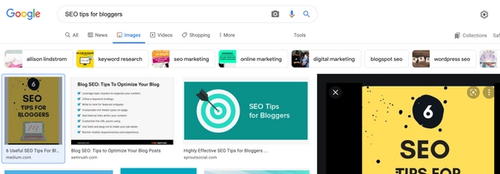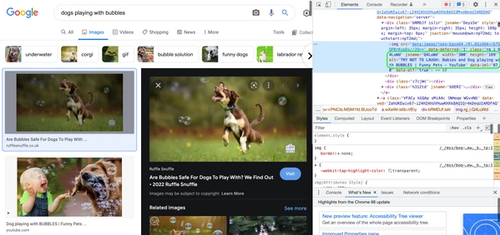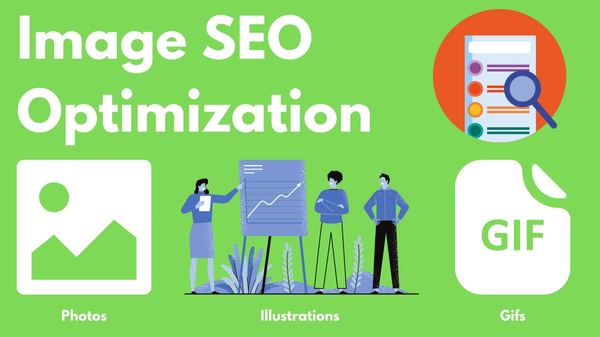Image Reverse Search

Do you guess what we are doing right now?
We are doing a reverse image search. Wait, what? You might say. Reverse image search is the technique when you upload a photo to an image search engine and try to find the source of the image and/or similar images to this image.
There are many ways to do the reverse image search and we used one of the methods. which is to find images similar to the part of the bigger photo.
In this example, we were interested only with the dog and the bubble and nobody else or nothing else and we got what we wanted.
To get some practical knowledge, let's run some experiments.
We will now search for "SEO tips for bloggers". We see the results below.

The most used way of reverse image search is by uploading photos to the search engine.
The less used version is when you enter the link from the website directly.
But why do we discuss reverse image search usage in the image SEO optimization article? Here's the reason. Why not leverage the reverse image search queries to bring traffic to your website with a little initial planning and minimal work on choosing the right images for your articles. After all, at least two highly important platforms for bloggers Google and Pinterest bring visual traffic to websites that do things in the right way.

Here’s how you can use this technique for your advantage:
Choose Unique Images: Instead of using stock photos that are widely circulated, opt for unique images. These could be high-quality original photographs, custom graphics, or infographics. Unique images are more likely to stand out in a reverse image search.
Optimize Image File Names and Alt Text: Before uploading images, make sure their file names are descriptive and include keywords relevant to your blog post. Also, always fill in the alt text with a concise description that includes your main keywords. This helps search engines understand and index your images more effectively.
Monitor Your Images: Use reverse image search to monitor where and how your images are being used online. This can help in identifying websites that are using your images without permission, or it can lead to opportunities for building backlinks to your site.
Encourage Image Sharing: Make it easy for visitors to share your images on social media and other platforms. This increases the visibility of your images and can drive more traffic back to your site.
By implementing these strategies, you can significantly boost your image SEO and draw more traffic to your blog. Remember, images are a powerful tool in the digital world, and when used wisely, they can greatly enhance your online presence.


